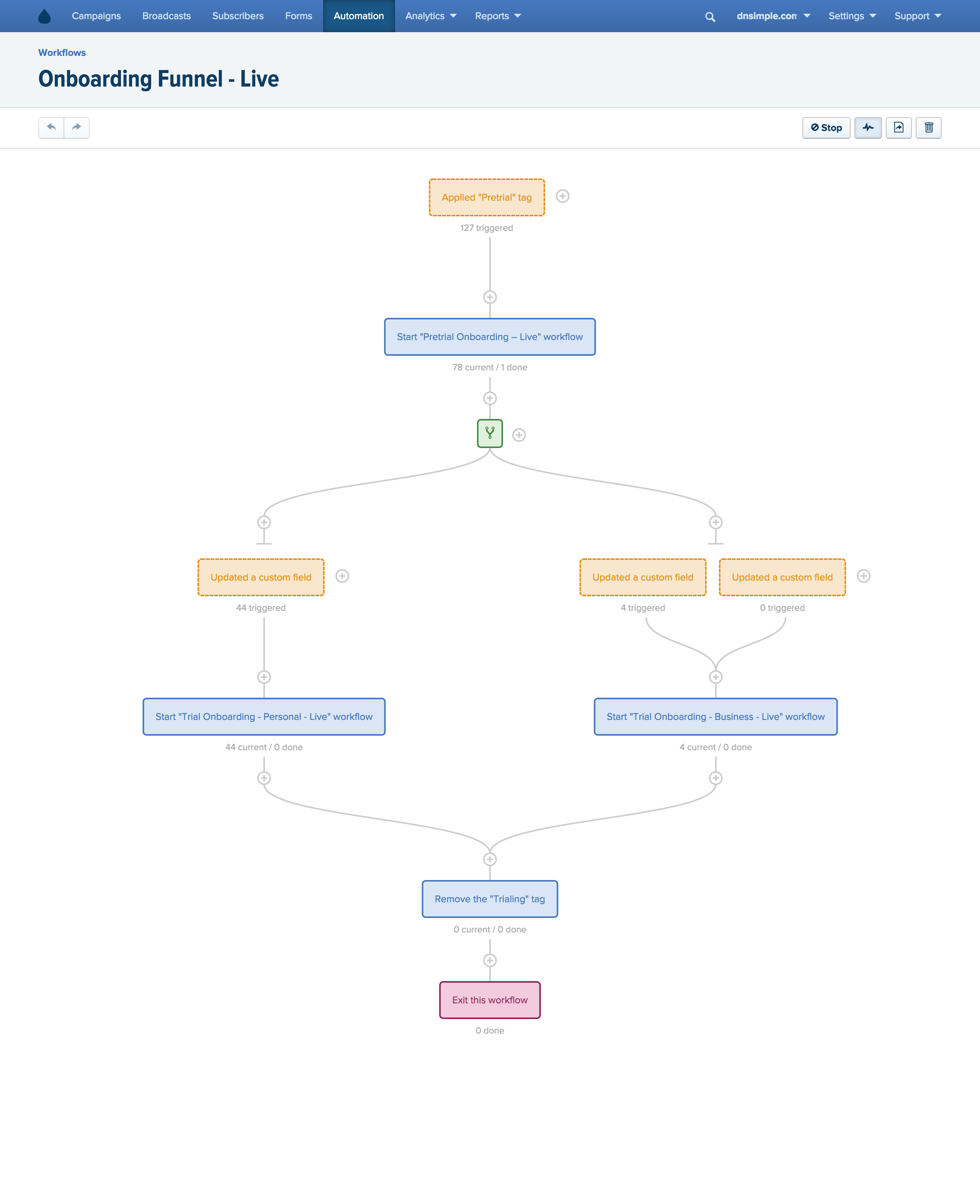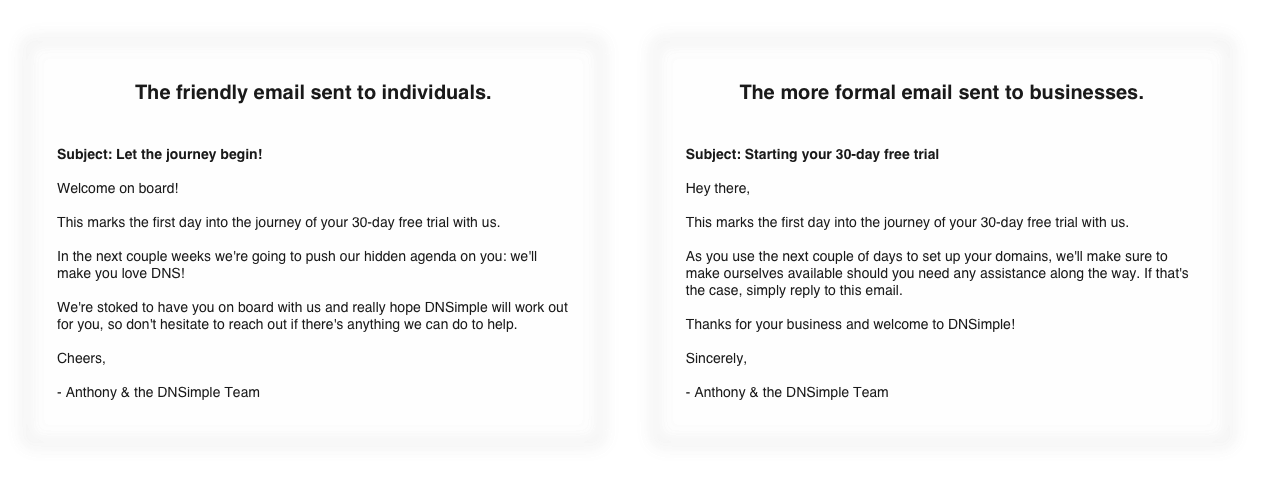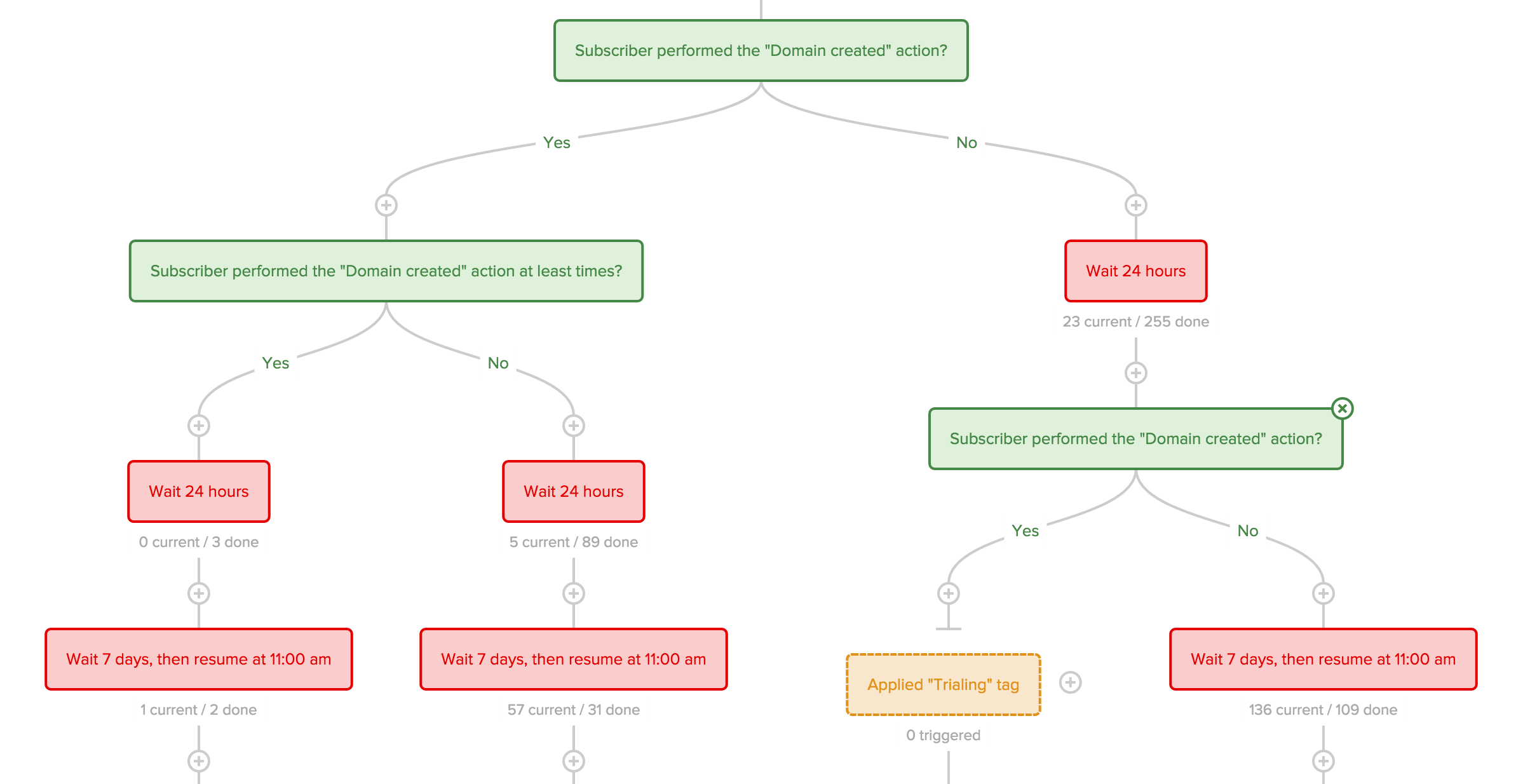Workflows in the wild – how we reinvented our onboarding emails using Drip workflows

We got an early access to Drip workflows a couple weeks ago. Like a kid in Disneyland, we couldn't help but try everything and in no time, workflows became the core of our onboarding strategy. Here's how we are doing it.
Some things are meant to be reinvented. Take your beloved walkman from the 90s, for example. Sure it was one heck of a fashion statement and it worked like a charm but eventually it became obsolete and lost its mojo: have you ever tried to take a selfie or hail a ride with it? Me neither.
The same goes for our onboarding emails in the pre-Workflows era. Up until a week ago, all we had to greet and guide our news customers was one meager email. Yup, one.
No fancy template, no witty jokes, nothing special. Just that one email that's been reliably plucking through since late 2010. This was in some ways, our Walkman.
In a true "build a great product and they'll come" fashion, we've been able to gain tens of thousands of customers over the years at DNSimple banking on the assumption that most people "don't judge a book by its cover".
Well, these times are over. It seems that every company out there – including our beloved competitors – have been bedazzling their 'book covers' lately. While the packaging doesn't make a poor product any better, it definitely blurrs the perceptions when it comes to shopping for it.
In that vein, it's time to bid farewell to our good old single onboarding email strategy and better communicate who we are and what we stand for.
That is finding a way to convey how our service can be used to improve our customers' lives by making it easy for any of them – from the lone developer to the corporate IT team – to connect and operate their domains.
Falling in love with workflows
This realization came a while back but we were able to finally take action on it when workflows literally landed on my lap two weeks ago. Thanks Rob for the early access!
I'll keep the lovefest short: it took me 2 seconds to totally get it. I kid you not, playing around with the workflows interface put me in a weird state of euphoria – I was like Bradley Cooper in Limitless: seeing all the possible combinations of amazing workflows I could create. So, I grabbed a glass of wine and got to work.
Right off the bat, I was able to harness workflows to tackle three main tasks:
- Make it easy to segment customers based on their behaviour.
- Learn more about what their behaviour are in the first place and what we might be missing.
- Automate anything and everything in between.
Mise en garde: Anthony spent a generous amount of time integrating with Drip to make sure that we pass along all the relevant data via the API. You can definitely go a long way without it but the more data you have for each customer, the better it gets.
Onboarding done right: one bucket at a time
All right, let's dive into what makes workflows a true game changer for us:
Like many SaaS companies, we offer tiered pricing with plans ranging from $5 to $250 per month. With such a wide spectrum covered, we inevitably provide services to both solo developers hacking their first projects and large public companies. To add to the complexity, our customers come with different skills levels – some of the best developers out there swear by us and, at the same time, non-technical people enjoy the simplicity of our service.
And like most SaaS companies, we're facing the following dilemma: "appeal to few, and lose the rest" or "appeal to all, and lose our personality". So, how can we ring true to the witty developer without alienating the more formal blue chip CTO?
The answer: Use workflows to segment our customer base to provide each subset with the right message and the appropriate tone at the right time.
"Easy peasy!", you say? Well, actually, you're right! It is! All we had to do was to start by crafting the right segments and go on from there.
We opted to keep it simple and to go one bucket at a time with the goal to one day have many smaller buckets targeted a specific subsets of our customer base.
First, we created two main buckets: one that includes all companies and on the other, the solopreneurs, designers, artists, developers and freelancers – they are segmented based on the plan they select.

That way we can tailor two very different onboarding experiences by using different tone for each subset.

Now, there's a small caveat with that approach: we still send toned-down emails to eclectic agencies who are on our higher tiers.
Ideally, we'd be able to identify them and hit them with our best shot. Thankfully, workflows might also be the solution to this issue.
Passive workflows to monitor behaviours
Indeed, with a little bit of creativity, you can make huge improvements to your workflows by passively monitoring customer behaviours to confirm certain theories or discover aspects you never imagined.
Going back to fine tuning our two buckets: we've set up a workflow that identifies – to the best of our knowledge - agencies and monitors their behaviour over time in the hopes to learn more about their habits and find ways to identify them early in their journey with us.
Here's another example: I wanted to better grasp the pace at which new customers navigate their way to ultimately become customers. Based on a hunch, the team's theory has always been that the speed at which a customer goes through the flow will have a direct correlation with their likelihood to convert (ie.: the faster they have an active account with a registered domain, the higher the chance that they'll be around and happy a year from now.) Incidentally, customers lagging behind would be at risk or might require a little push.
So the question is "how fast?"
As shown in the screenshot below, by replacing actions with delays we're now able to visually record the number of customers who pass in each branches with the hopes of fine tuning the timing of our emails in other workflows.

With the right workflow and a little bit of time, we'll be able to collect enough cues to figure out the ideal pace.
What's next?
MOAR WORKFLOWS! Seriously though, there is really no limit to how much can be done with workflows.
Personally, I'm definitely looking to a few more booze fuelled evenings tweaking workflows based on other workflows themselves inspired by monitoring workflows.
Author's note: I strongly suggest using this blog post as your next drinking game. Every time you see the word "workflow" in it… well, you know the drill! Please drink responsibly and tweet your performances to @antoinemeunier.
Antoine Meunier
cruising through #vanlife in a '72 VW bus.
We think domain management should be easy.
That's why we continue building DNSimple.

